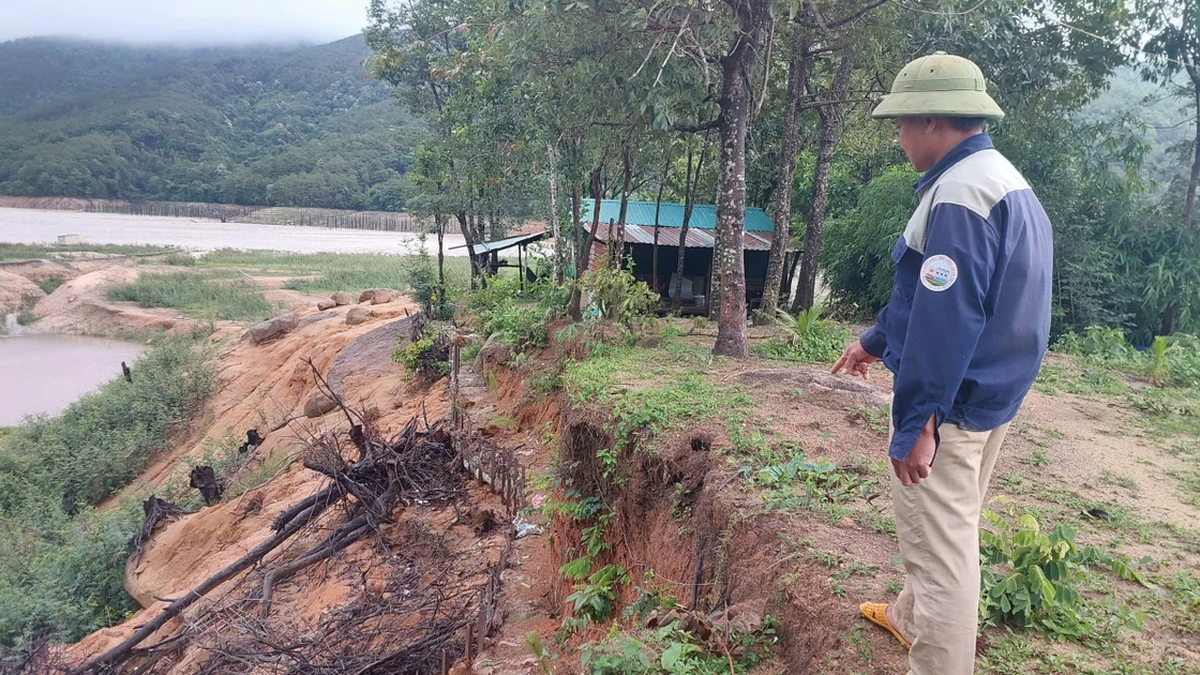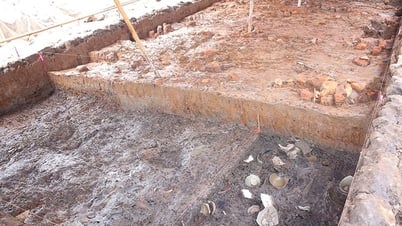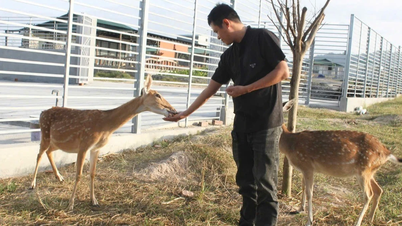America - The world's largest aircraft "graveyard" stores retired or waiting-to-fly planes, offering an exciting experience to visitors.

Pinal Aeropark in Arizona, USA, is one of the world's largest "aircraft graveyards" (or aircraft storage areas) with an area of over 610 hectares. In 2020, when the pandemic broke out, causing airlines to cut aircraft and pilots, hundreds of aircraft around the world were transferred to this storage area. Pictured is an aircraft being renovated at Pinal Aeropark.

An aerial view of the facility.
According to Travel + Leisure, modern planes can be used for at least 30 years. After their useful life ends, they are sent to aircraft workshops - also known as aircraft graveyards. Here, they wait for humans to decide one of two futures: continue to maintain or destroy them for valuable components.

Ascent Aviation Services (AAS) is the largest maintenance and overhaul provider at Pinal Aeropark. Since March 2020, aircraft have been arriving at a rate of about one per hour, requiring the unit to add more than 150 employees, according to AAS.

Aircraft technology continues to advance, causing more and more old planes to be sent to the “graveyard.” Some airlines may buy back these planes to continue flying because they are cheaper than buying new ones.
The other case occurs when the aircraft is too old. After being brought to the aircraft factory, they will be disassembled piece by piece, first draining all the remaining fluids such as fuel, hydraulic fluid, lubricants. Engineers continue to remove useful parts such as engines for resale. After these two processes, the aircraft is basically ready to be scrapped. The remaining parts after disassembling the aircraft, especially the metal, are always thoroughly recycled. When the process is finished, there will be nothing left of the aircraft.

Leasing companies have bought many of the planes that were sold during the pandemic at bargain prices and placed them in Pinal for maintenance. Normally, they don’t have much involvement in maintenance, which is the responsibility of the lessee. But they’re working with AAS more because the jets need maintenance throughout their storage.
Typically, AAS engineers spend two weeks preparing to store unused aircraft. They must seal and protect parts like engines and landing gear to prevent wildlife from entering and living in the gaps.

An aircraft that is no longer of any use is being disassembled for its components. The parts that are removed usually only account for 10% such as the interior, the remaining 90% can still be reused including the engine, electronic systems, landing gear.

Some airlines will take metal parts of the aircraft such as logos and company names to make souvenirs or create works of art.

One of the rare Boeing 747SPs stored at the Pinal facility. The type was first introduced in 1974. As of January, only three remained in service worldwide, with 17 in storage or retired.

An old Boeing 747 has been sitting in the sun in Pinal for years.
Hangars for “dead” aircraft are found all over the world, especially in desert climates. These conditions naturally preserve the planes, preventing corrosion. Shea Oakley, an aviation historian, says planes sent to desert environments require “minimal maintenance” if they want to fly again. Or if the plane is scrapped, its parts are largely undamaged by the elements.

Pinal Air Park is open to the public, although some areas are off limits for security reasons. They also offer tours, but they are limited and require advance registration.
Susan, who lives in Washington and is coming in 2022, said it was an “unbelievable experience” to see the long lines of planes. She also enjoyed looking up the aircraft numbers to learn about their history.
(According to 24h)
Source

























![[Photo] Nghe An: Provincial Road 543D seriously eroded due to floods](https://vphoto.vietnam.vn/thumb/1200x675/vietnam/resource/IMAGE/2025/8/5/5759d3837c26428799f6d929fa274493)


![[Photo] Discover the "wonder" under the sea of Gia Lai](https://vphoto.vietnam.vn/thumb/1200x675/vietnam/resource/IMAGE/2025/8/6/befd4a58bb1245419e86ebe353525f97)




































































Comment (0)